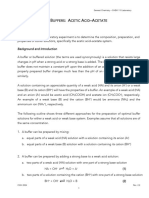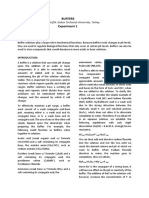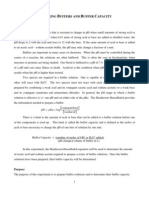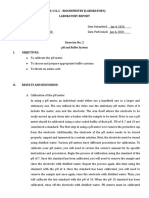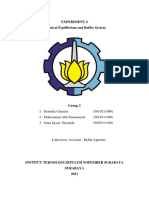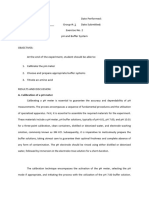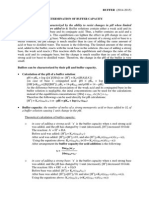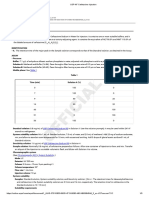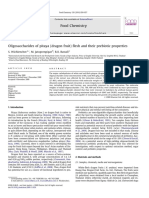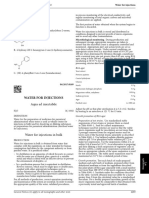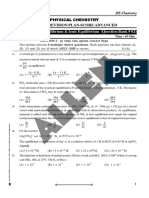0% found this document useful (0 votes)
42 views5 pagesPost Lab 3
The experiment aims to understand buffer solutions, their pH stability, and their applications in various contexts. It involves preparing ammonia and phosphate buffers, testing their pH, and evaluating their resistance to pH changes upon the addition of acids or bases and dilution. The results confirm the predictable behavior of buffers and highlight potential errors in preparation and measurement.
Uploaded by
s-mariam.mekawiCopyright
© © All Rights Reserved
We take content rights seriously. If you suspect this is your content, claim it here.
Available Formats
Download as PDF, TXT or read online on Scribd
0% found this document useful (0 votes)
42 views5 pagesPost Lab 3
The experiment aims to understand buffer solutions, their pH stability, and their applications in various contexts. It involves preparing ammonia and phosphate buffers, testing their pH, and evaluating their resistance to pH changes upon the addition of acids or bases and dilution. The results confirm the predictable behavior of buffers and highlight potential errors in preparation and measurement.
Uploaded by
s-mariam.mekawiCopyright
© © All Rights Reserved
We take content rights seriously. If you suspect this is your content, claim it here.
Available Formats
Download as PDF, TXT or read online on Scribd
/ 5
